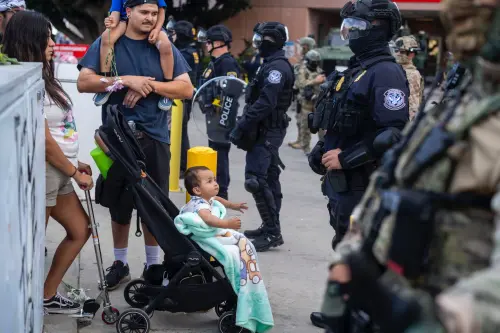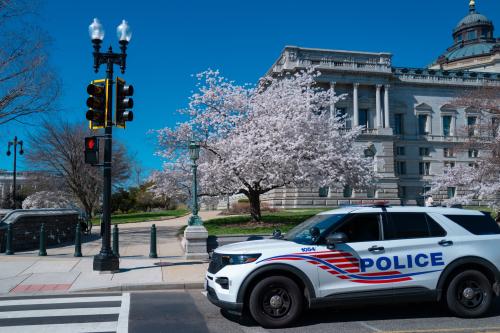Among the dozens of executive orders (EOs) President Donald Trump issued in his first few days in office were those targeting diversity, equity, and inclusion (DEI) efforts and LGBTQIA protections. Specifically, one EO was directed to DEI efforts in the federal sector, another directed to DEI efforts across non-federal public and private sector entities, and a third that targeted protections for LGBTQIA individuals.
Given a flurry of legal challenges (including a lawsuit challenging the DEI EOs that has already resulted in an order enjoining several of those provisions), many have raised questions about the president’s authority to issue these three EOs, as well as the likely impact of the orders. This article offers a brief overview of the nature of the president’s authority to issue EOs and the legal effect (or lack thereof) of those orders generally. It then unpacks the practical impact of these EOs across the three targeted contexts: the federal workforce, private employment, and higher education.
What is an executive order?
EOs are directives issued by the president announcing the administration’s policy priorities and instructing federal agencies to exercise their authority consistent with those priorities. EOs have been issued by every president since George Washington. They are routine precisely because they often change with each administration, rendering their effect temporary. EOs simply represent the policy of the current administration and direct the enforcement authority of federal agencies during that administration. Most importantly, they do not have the force of law: EOs cannot bind any actors outside of the federal government, but they can have far-reaching effects by leveraging the enforcement power and buying power of the federal government.
A useful example is EO 11246, issued by President Lyndon B. Johnson in 1965. EO 11246 established the policy of “affirmative action,” designed to ensure equal opportunities for minorities (and later women, disabled persons, and veterans) who had been shut out of many workplaces due to discriminatory hiring practices. Not only did EO 11246 direct federal agencies to open up employment opportunities to those who previously had been excluded, but it also required federal contractors to engage in affirmative action in their own workplaces. Importantly, these federal affirmative action requirements have always eschewed quotas, and have long prohibited employers from making decisions on the basis of race or gender, with limited exception. While EO 11246 only controlled the conduct of federal contractors pursuant to the terms set forth in government contracts, its impact was far-reaching in opening up workplace opportunities for minorities and women.
Notwithstanding EO 11246’s efforts to ensure equal opportunities in the workplace, it is the Civil Rights Act of 1964 that, among other things, prohibits race and sex discrimination in both employment and education generally and provides the basis for legal liability against those who engage in such discrimination. While the Civil Rights Act can be enforced in court, the only remedy for noncompliance with EO 11246 is the withdrawal of federal contracts (including research grants to colleges and universities). But given the purchasing power of the federal government (in total more than $750 billion), this withdrawal can—and Trump’s threats to use this power likely will—have a sizeable influence on federal contractors.
What is the effect of executive orders?
Although controversial EOs are often revoked by subsequent presidents, EO 11246 had remained in force under every president (including during Trump’s first term), until Trump revoked it in his EO directed to DEI efforts by non-federal public and private sector entities. While revoking EO 11246 has no effect on enforcement of the Civil Rights Act, it does alter certain requirements imposed on federal contractors. Now, rather than reporting annually on their affirmative action efforts, federal contractors will instead have to certify that they do “not operate any programs promoting DEI that violate any applicable Federal anti-discrimination laws.” But nothing in EO 11246 required covered entities to satisfy their equal employment obligations by adopting DEI policies or programs, and nothing in the new EO will require federal contractors to abandon those DEI policies or programs if they are otherwise lawful under the Civil Rights Act.
While Trump’s revocation of EO 11246 represents the end of a remarkable 60 years of enforcement under both Democratic and Republican presidents, it does not revoke, alter, or amend the Civil Rights Act. Instead, this EO merely directs various federal agencies (namely, the Department of Justice, Department of Labor, and Department of Education) to enforce the Civil Rights Act consistent with Trump’s declared policy priorities. One example of how this shift in policy under the Trump administration will affect the exercise of federal enforcement power (despite effecting no change in civil rights law) is the position taken by Andrea Lucas, the current acting chair of the Equal Employment Opportunity Commission—a federal agency within the Department of Labor charged with enforcing the prohibition on workplace discrimination under the Civil Rights Act.
Lucas has expressed her intention to “reject identity politics…by rooting out unlawful DEI-motivated race and sex discrimination…defending the biological and binary reality of sex…and remedying other areas that have been historically under-enforced by the agency.” In other words, civil rights law was enacted and historically enforced primarily on behalf of racial minorities and women (and more recently on behalf of sexual minorities), but the Trump administration has signaled its intent to enforce civil rights laws primarily on behalf of straight, white men and cis women. This is a significant reversal from the Biden administration’s policy priorities, which (through its own set of EOs) had promoted DEI efforts and otherwise sought to ensure protections against discrimination for members of the LGBTQIA community. But that is the inherent nature of EOs: They are often transitory and highly reflective of the current administration’s politics.
What do Trump’s executive orders mean for DEI?
The impact of the DEI and LGBTQIA executive orders will vary depending on who is being targeted and how. EOs targeting the federal workforce and the operations of the federal government will have the most significant impact, because the president has the most control over federal agencies themselves. In essence, the president is the chief executive officer of the federal executive branch; as a result, the president gets to dictate many of the personnel practices and operating procedures that govern federal agencies (although there are some limits, which Trump may have already breached).
For instance, the Civil Rights Act prohibits the president from engaging in workplace discrimination on the basis of race, color, national origin, religion, or sex (including sexual orientation and gender identity), but it does not require the president to administer workplace DEI programs. So, he is free to abandon those efforts.
In addition to revoking EO 11246, Trump’s EO targeting federal contractors requires them to certify that they do “not operate any programs promoting DEI that violate any applicable Federal anti-discrimination laws.” Given the scale of the federal government’s purchasing power, these federal contractors (including some of the nation’s largest businesses and universities) will be forced to trade their affirmative action obligations under EO 11246 for these new anti-DEI certifications. Just as the requirements of affirmative action under EO 11246 had the effect of promoting equal employment opportunities for minorities and women, it is likely these new certification requirements will have a chilling effect on DEI efforts among federal contractors. However, certification that an entity is not operating “illegal DEI programs” need not result in the abandonment of lawful DEI policies and practices. In fact, it is precisely this potentially chilling effect on these contractors’ free speech rights—as well as the uncertainty regarding what might be deemed “illegal” under the EO—that prompted a federal court to temporarily enjoin this certification requirement, as well as a portion of the EO targeting federal sector “equity contracts,” pending litigation.
Moreover, despite the magnitude of federal government contracting, less than 5% of private businesses in the U.S. contract with the federal government. An even smaller share (3.5%) of colleges and universities are highly dependent on federal research grants. In order to reach non-federal contractors, this EO further directs the agencies charged with enforcement of the Civil Rights Act to exercise their enforcement power by identifying “the most egregious and discriminatory DEI practitioners” in both the private sector and higher education. This will take the form of compliance investigations, which can often lead to conciliation (or settlement) agreements, and in some instances, the filing of federal civil rights lawsuits. Although the Trump-directed Department of Justice has threatened criminal action against those engaged in alleged “illegal DEI,” the source of this authority is unclear under the Civil Rights Act, which only provides for civil penalties. Notably, this enforcement provision has also been enjoined pending litigation for the same reasons the certification and “equity contract” provisions were enjoined.
In spite of what appear to be serious threats and corresponding obligations in these EOs, it is important to remember that EOs do not have the force of law. They merely direct federal agencies on how to exercise their enforcement authority under the law. While this threat of expanded enforcement action is not trivial, nothing about the Civil Rights Act or the conduct that law proscribes or permits has changed with the issuance of these EOs. Unlike the EO directed to the federal workforce, which dismantles DEI efforts wholesale, the EO aimed at non-federal public and private sector entities, including federal contractors, targets only those DEI practices deemed “illegal” or “unlawful” under civil rights laws. However, that EO does not define what constitutes an “illegal” or “unlawful” DEI practice—nor could it.
Federal courts retain sole authority to interpret civil rights law
Federal courts possess the sole authority to determine what conduct is “illegal” or “unlawful” under the Civil Rights Act. The DEI and LGBTQIA executive orders may reflect a political position that gender is fixed and binary, or that many DEI practices are “illegal” or “unlawful.” But the Trump administration has no authority to dictate the law or direct how courts exercise their judicial authority to interpret it.
For instance, notwithstanding the LGBTQIA order’s insistence on the “biological reality of sex,” the Supreme Court has already declared that LGBTQIA discrimination in employment violates the Civil Rights Act’s prohibition on sex discrimination (the Court has not ruled on LGBTQIA discrimination in education). Moreover, while the DEI EOs express hostility toward DEI, the Supreme Court has consistently said that DEI efforts are not only permissible, but in its most recent case involving Harvard University, the Court called diversity a “commendable” goal. Nothing in these EOs alters these judicial decisions, which remain the law. The Trump administration’s inability to clarify what conduct is prohibited under these EOs—since that determination is reserved for courts—is precisely the reason at least one federal court has already enjoined several provisions of the DEI EOs, and the LGBTQIA EO is also being challenged in court.
Trump’s EOs aim to eradicate the practice of DEI and eliminate LGBTQIA protections. They will be most successful in doing so within the federal workforce, over which the president exercises a significant amount of control. The ability of these EOs to be effective in altering the practices of private employers or higher education institutions, however, is much more tenuous. The most important lever the president has over these entities is the power to control the federal purse strings through contracts. This may eventually exact the necessary certification compliance from these federal contractors, but ultimately, the determination of whether any DEI practice is “illegal” or “unlawful” or whether and how LGBTQIA individuals enjoy broad protections against discrimination under federal civil rights law remains in the hands of federal courts—not President Trump.
The Brookings Institution is committed to quality, independence, and impact.
We are supported by a diverse array of funders. In line with our values and policies, each Brookings publication represents the sole views of its author(s).



Commentary
An executive order explainer: Why the courts will have the final say on Trump’s anti-DEI actions
February 27, 2025